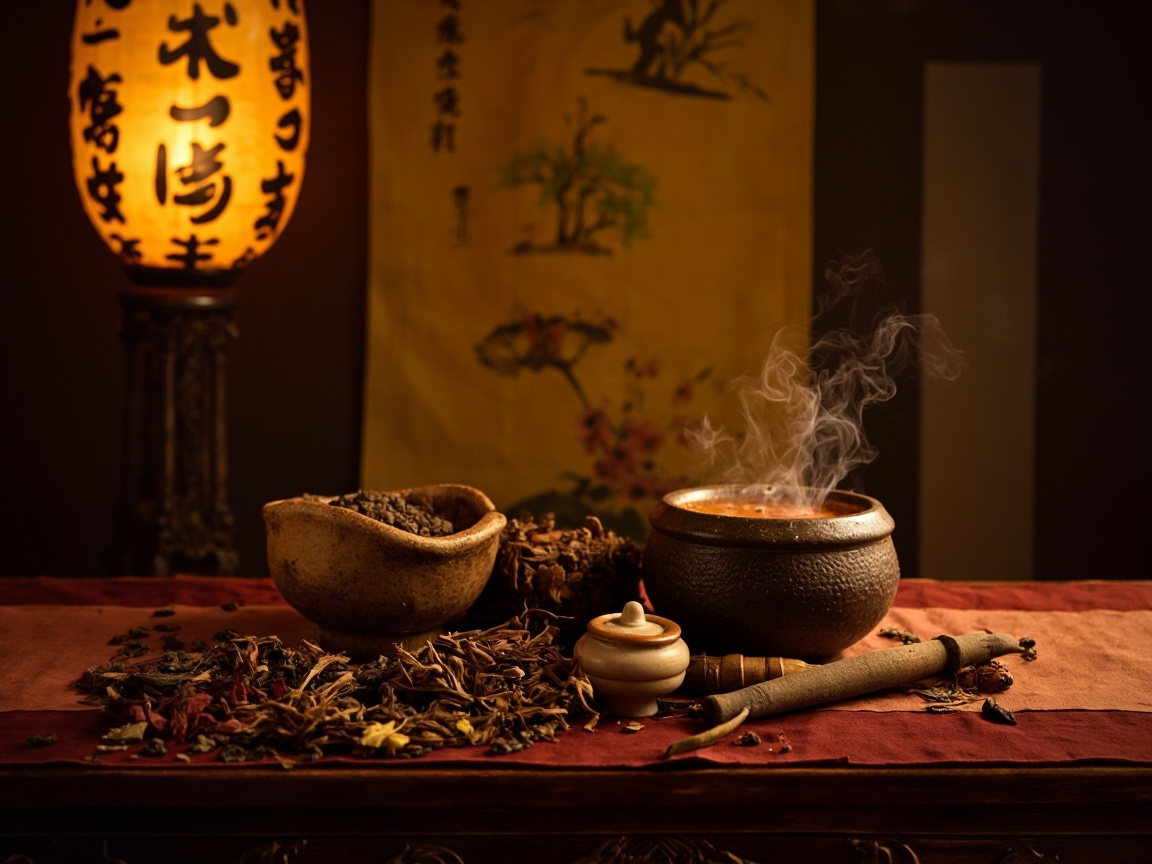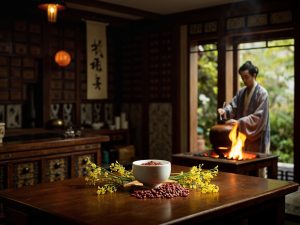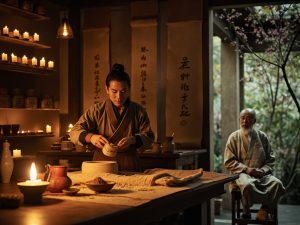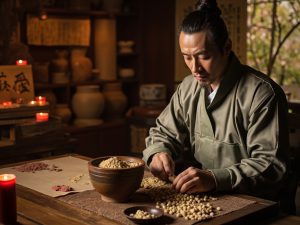Table of Contents
ToggleHuang Qi Gui Zhi Wu Wu Tang – Nan Kaiyang
Author: Nan Kaiyang Editor: Gu Yuxi Translator: Gu Yuxi
Article:
Synopsis from Jingui Yaolue (Prescriptions from the Golden Cabinet), Chapter 6: Blood Bi and Consumptive Diseases
2. In blood bi (blood impediment), where both Yin and Yang are weak, the cun (inch) and guan (gate) pulses are faint, and the chi (cubit) pulse is slightly tight. The external manifestation is numbness of the body , resembling wind bi. Huang Qi Gui Zhi Wu Wu Tang is indicated.
This ancient, remarkable formula has extraordinary efficacy in treating numbness of the hands, feet, and face. The causes of such numbness are numerous in modern medicine, commonly including cervical spondylosis, lumbar disc herniation, neuritis, carpal tunnel syndrome, or cerebral infarction. In Traditional Chinese Medicine (TCM), these fall under the category of blood bi, often due to disharmony of Qi and Blood, or Qi and Blood deficiency, leading to inadequate nourishment of the limbs. This results in cold limbs, numbness and coldness of fingers and toes, and distending pain in the limbs. It is commonly seen in people who lead sedentary lifestyles, indicating insufficient ying (nutritive Qi) and wei (defensive Qi). If they are exposed to wind evil, blood circulation stagnates, leading to blood bi obstruction and numbness of the skin and flesh.
Jingui Yaolue Fang Lun Ben Yi (Original Meaning of the Prescriptions from the Golden Cabinet) states: “Huang Qi Gui Zhi Wu Wu Tang can treat both wind bi and blood bi.” Many individuals recovering from severe illness, those with prolonged chronic conditions, those with poor constitution, or the elderly and frail often experience numbness in their hands and feet, a pale tongue, a weak pulse, and susceptibility to wind-cold. Modern medical diagnoses might include peripheral neuropathy, Raynaud’s disease, peripheral nerve disorders, acrovascular disorders, rheumatism, periarthritis of the shoulder, etc. In these situations, this formula can be considered. It can be chosen for all cases of Qi deficiency with blood stagnation and disharmony of ying and wei. It is most commonly used for hand numbness caused by cervical spondylosis and periarthritis of the shoulder. Clinically, the differentiating characteristics are numbness of the skin and flesh, joint pain, or sweating with aversion to wind, and a faint pulse.
Appendix: Reasons for Omitting Gan Cao (Licorice) in this Formula:
1、Both Gan Cao and Huang Qi are Qi-tonifying herbs. The difference lies in that Huang Qi (Astragalus) excels at tonifying the Qi of the cou li (space between skin and muscles), while Gan Cao excels at tonifying Heart Qi (this is also why the dosage of prepared Gan Cao is large in Zhi Gan Cao Tang).
2、Huang Qi, while tonifying Qi, can also promote sweating and release the muscles. In this formula, it can exert its effects of benefiting Qi, consolidating the exterior, unblocking Yang, and dispelling bi. It can also achieve the effect of Gan Cao in benefiting Qi and nourishing the middle. Thus, it serves a dual purpose, making Gan Cao redundant.
3、For the elderly, frail, or thin individuals, the dosage of Huang Qi should not be too large or taken for prolonged periods. Its characteristic of “pulling up Kidney Qi” can lead to frequent nocturia or urinary incontinence if taken for a long time.
Clinical Modifications (For Reference)
Since the primary cause of this formula’s indications is insufficient Yang Qi leading to Qi and Blood deficiency and stagnant blood circulation, typical patients are uncommon in clinical practice. Here are a few suggested combinations for reference:
1、For excessive sweating with fluid depletion and body pain, combine with Xin Jia Tang.
2、For pronounced Yang Qi damage, combine with Fu Zi Tang.
3、For joint creaking, add Xuan Shen (Scrophularia Root), Tian Hua Fen (Trichosanthes Root).
4、For joint pain with dampness, add Yi Yi Ren (Coix Seed), Fang Ji (Stephania Root), Cang Zhu (Atractylodes Rhizome), Hai Feng Teng (Piper Kadsura Stem).
5、For Qi stagnation, combine with Si Ni San.
6、For a dark purplish tongue body, add Dang Gui (Angelica Sinensis Root), Hong Hua (Safflower), Ji Xue Teng (Spatholobus Stem), Chuan Xiong (Ligusticum Chuanxiong Rhizome).
7、For postpartum body pain, significantly increase the dosage of Huang Qi and Gui Zhi. For lower back pain, add Bai Zhu (White Atractylodes Rhizome), Du Zhong (Eucommia Bark), Chuan Duan (Dipsacus Root), Gou Ji (Cibotium Rhizome), Rou Gui (Cinnamon Bark), etc.
Constitutional Characteristics for Huang Qi Gui Zhi Wu Wu Tang:
Loose skin, especially on the abdomen; strong appetite but intolerant of hunger; often has lower limb edema or localized dry, purplish skin; pain when walking; prone to cramping; or prone to infections and ulcers. The tongue coating is white, the pulse is weak. They are susceptible to nervous system diseases, obesity, and musculoskeletal conditions.
Disclaimer:
The experiences and insights shared above represent the author’s personal usage and understanding, and are provided for reference only as part of academic exchange. Please do not blindly replicate or apply them; any consequences arising from such actions are solely your responsibility. As individual constitutions vary, medication should be tailored accordingly. It is advisable to use such treatments under the guidance of a qualified physician. If you have additional experiences to share, comments and submissions are welcome.
If you appreciate my article, please give it a like.
If you are a generous and affluent individual, please consider making a donation!
Your recognition is my greatest motivation to continue writing—thank you very much!
USD Donation Button —
A RMB donation button is available below.
 微信赞赏
微信赞赏 支付宝赞赏
支付宝赞赏




